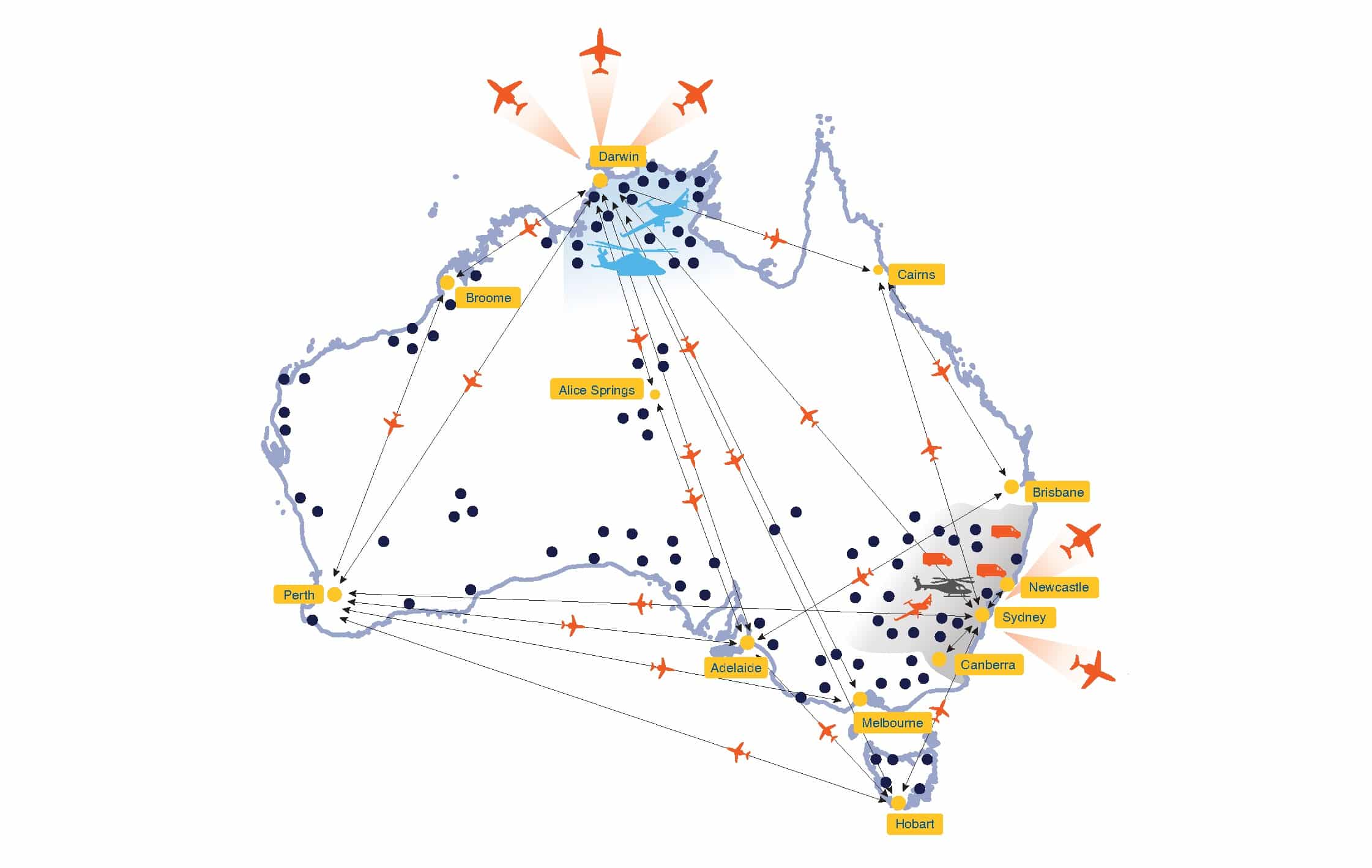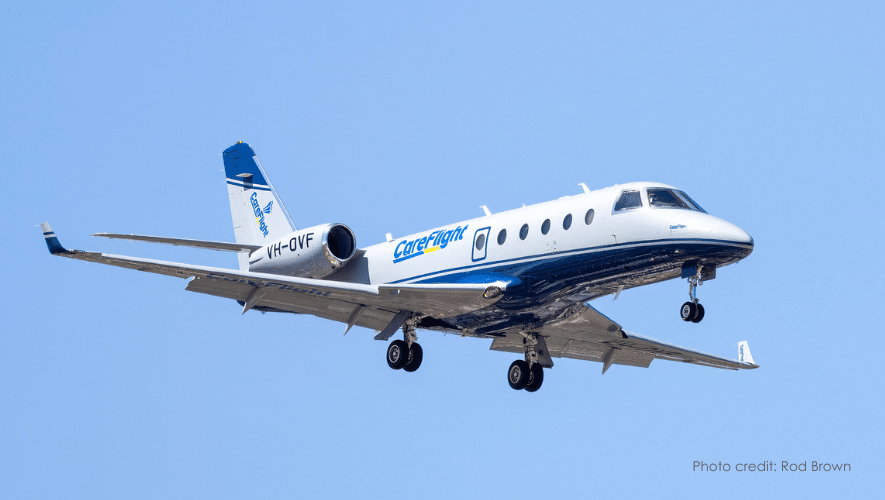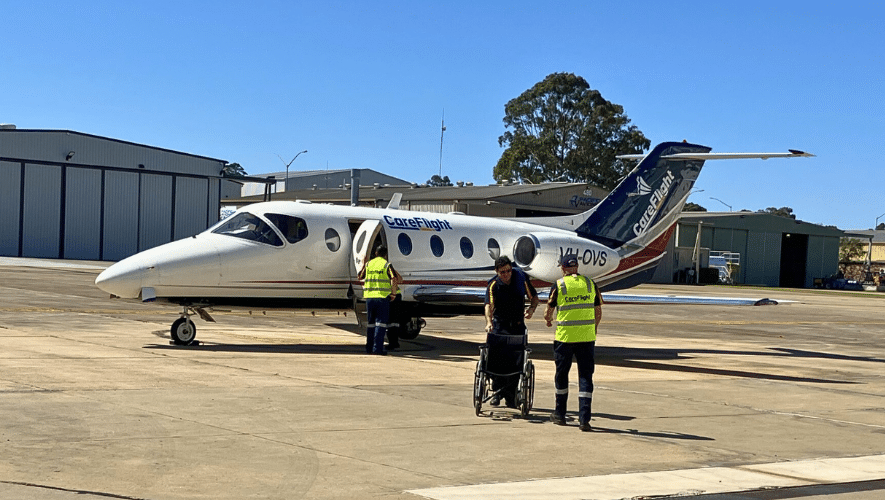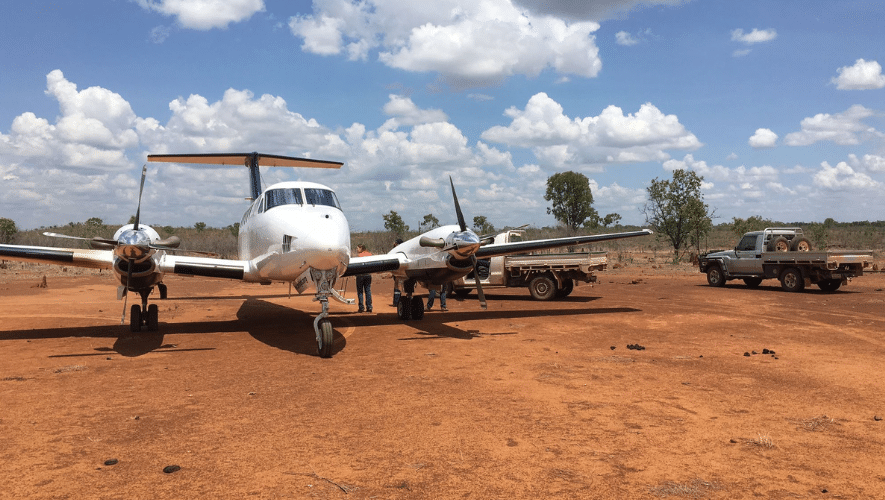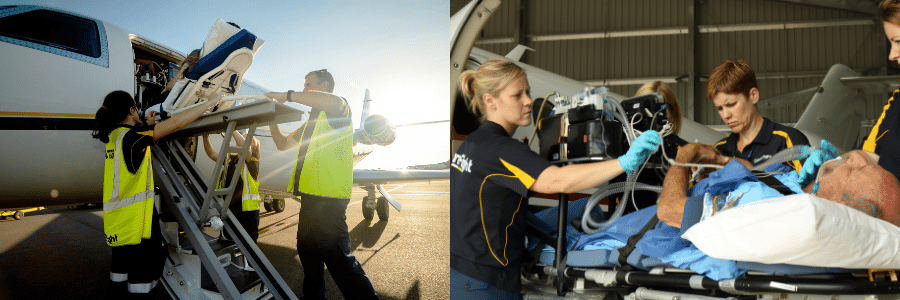Medical Air Transport Services
CareFlight is the only medical retrieval organisation in Australasia that owns and operates its own fleet of dedicated jets, King Air turboprops, and helicopters, providing a complete medical air transport service from the initial call to hospital admission.
Our fixed-wing medical air transport operations are based at Newcastle and Bankstown Airports in New South Wales, as well as Darwin International Airport in the Northern Territory.
Using our own aircraft and highly trained teams of doctors, nurses, pilots, and drivers, CareFlight delivers a seamless medical transport service. From coordinating the first request for assistance to ensuring patients are safely admitted to their destination hospital, every step is managed in-house.
CareFlight has successfully conducted a wide variety of medical transport missions for government agencies such as the Australian National Critical Care and Trauma Response Centre (NCCTRC) and the Australian Defence Force (ADF). We also work with global assistance providers, travel insurance companies, energy and resource sector organisations, and private patients worldwide.
Our in-house expertise covers every aspect of medical air transport operations, including staffing, crew rostering, clinical training, aircraft logistics, patient records management, and handling international travel requirements like visas when needed. This allows us to mobilise our medical teams quickly and efficiently, ensuring patients receive urgent care without delay.
Enquire about 24 hour medical air transport tasking

